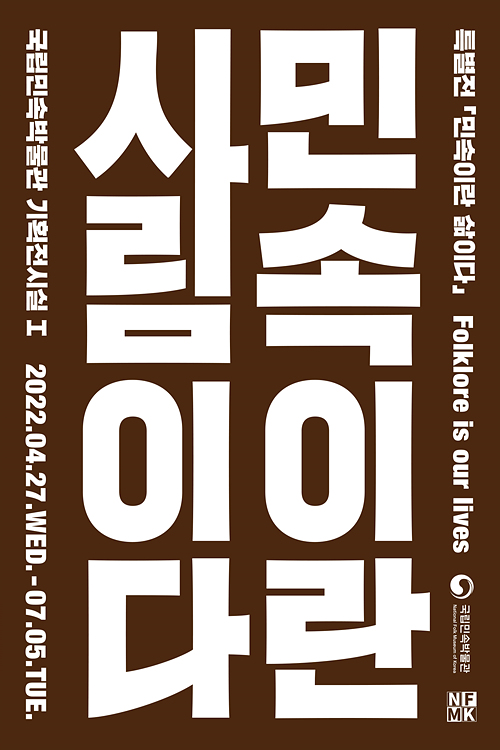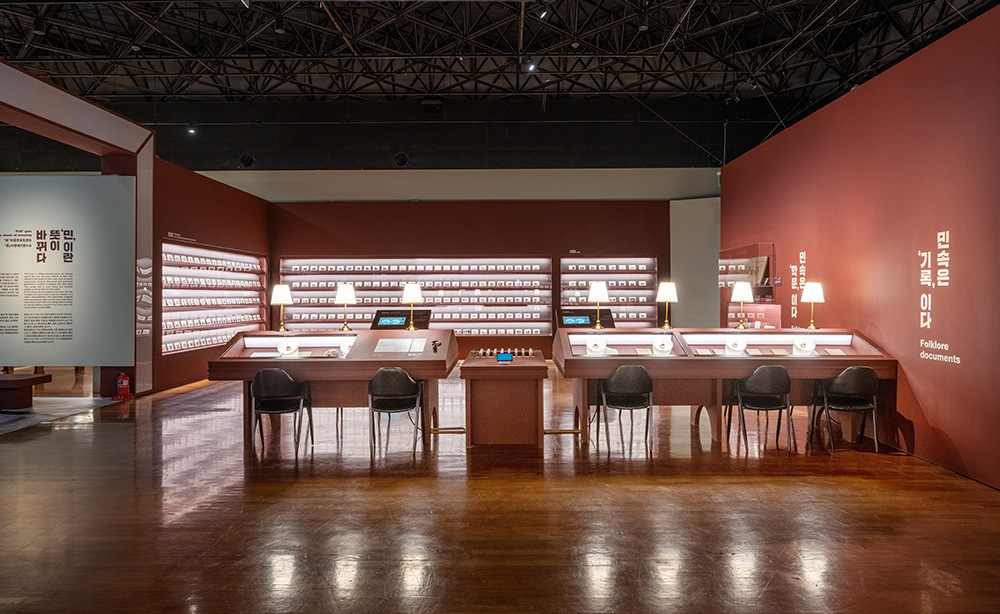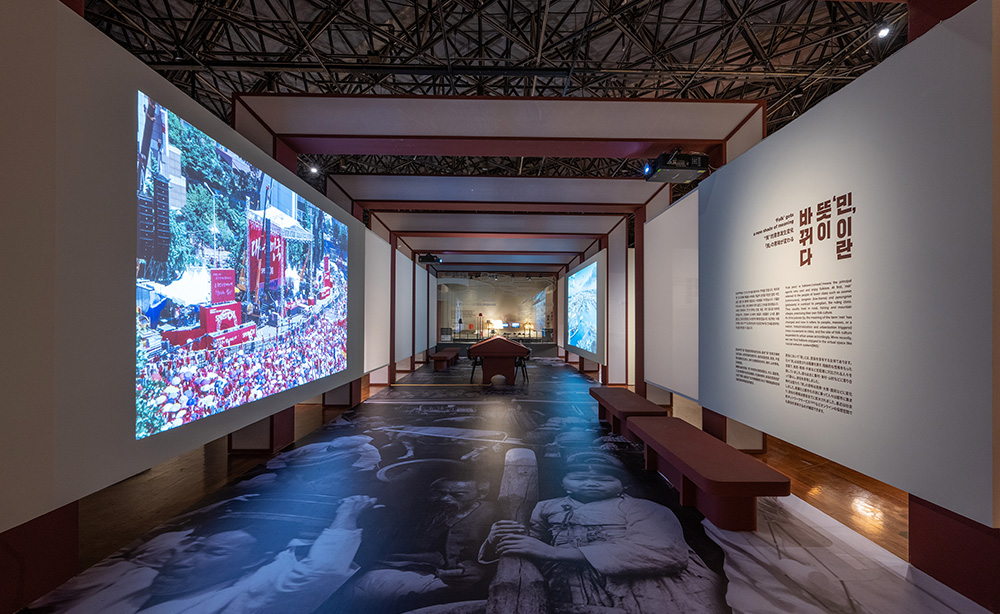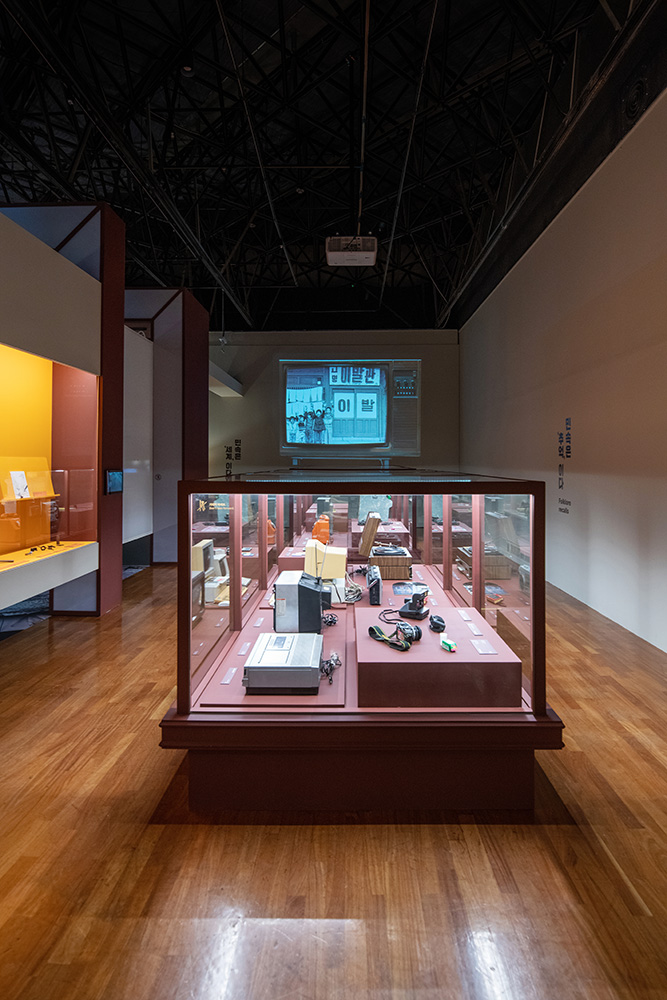Exhibitions
| Title | Folklore is our lives |
|---|---|
| Period | April 27, 2022 ~ July 5, 2022 |
| Venue | Special ExhibitionⅠ, NFMK Seoul |
|
The National Folk Museum of Korea is presenting a special exhibition, 《Folklore is our lives》, to explore the meaning and the significance of Korean folklore.
Korean folklore began to attract academic attention in the early 20th century. Early folklorists tried to document the entire life of Korean people at that time, including folk beliefs, shamanism, festivals, performances, rites of passage, folktales, folk songs, food, clothing, housing and livelihood. The endeavor is still going on, and now the big bowl of Korean folklore is full of the lives of Korean people. This special exhibition will provide you with an opportunity to look at our lives of today and yesterday and imagine ourselves of tomorrow. We also hope you would appreciate the true color of our folklore and have some time to look back on your own life so far.  Folklore attracts attention Folklore has been the subject of a modern academic discipline in Korea since the 1920s. During Japanese Occupation, some people explored folklore to strengthen the national identity and inspire Korean people, while others used it to serve Japanese colonial rule. The reason why both of these seemingly opposite camps paid attention to folklore was because it was considered to contain the thoughts and lives of Korean people. This idea led to various activities including researches, studies and the foundation of academic societies, which in turn became the basis for establishing a museum of folk culture right after the independence. These activities yielded precious data that have been passed down to this day for us to explore our lives of the past. ‘Folk’ gets a new shade of meaning ‘Folk (min)’ in folklore (minsok ) means the principal agents who own and enjoy folklore. At first, ‘min’ referred to the people of lower class such as seomin (commoners), sangmin (low-borns) and pyeongmin (plebeians) in contrast to yangban, the ruling class. They usually lived in rural, fishing and mountain villages, practicing their own folk culture. As time passes by, the meaning of the term ‘min’ has changed and now it refers to people, masses, or a nation. Industrialization and urbanization triggered mass movement to cities, and the site of folk culture expanded to urban areas accordingly. More recently, we can find folklore enjoyed in the virtual space like ‘social network system(SNS).’ Folklore expands its territory Although times have changed, folk beliefs, shamanism, folk festivals, rites of passage are still the main subjects of folklore studies. And now what we studied previously as folklore has become globally famous as ‘K-culture.’ Meanwhile, the daily life of our past, referred to as 7080 or 8090, is being piled up one by one in the big bowl of Korean folklore. Folklore of the present has more diverse and expanded realms than before. Beyond the geographic confinement, we now compare our folk culture with that of other countries, as well as that of Koreans abroad. Current issues such as multiculturalism, aging, environmental pollution and infectious diseases are also being noticed in terms of life and everyday practices. Moreover, everyday routines and life stories of individuals are incorporated in our study of folklore, as are the characteristics of novel communities such as industrial complexes and Chinatown. Folklore of the present is being filled with our lives, which keep going right now. |
|
| Date | 2022-04-27 |
| 이전글 | Sacred Tiger |
|---|---|
| 다음글 | Simple and Neat |


